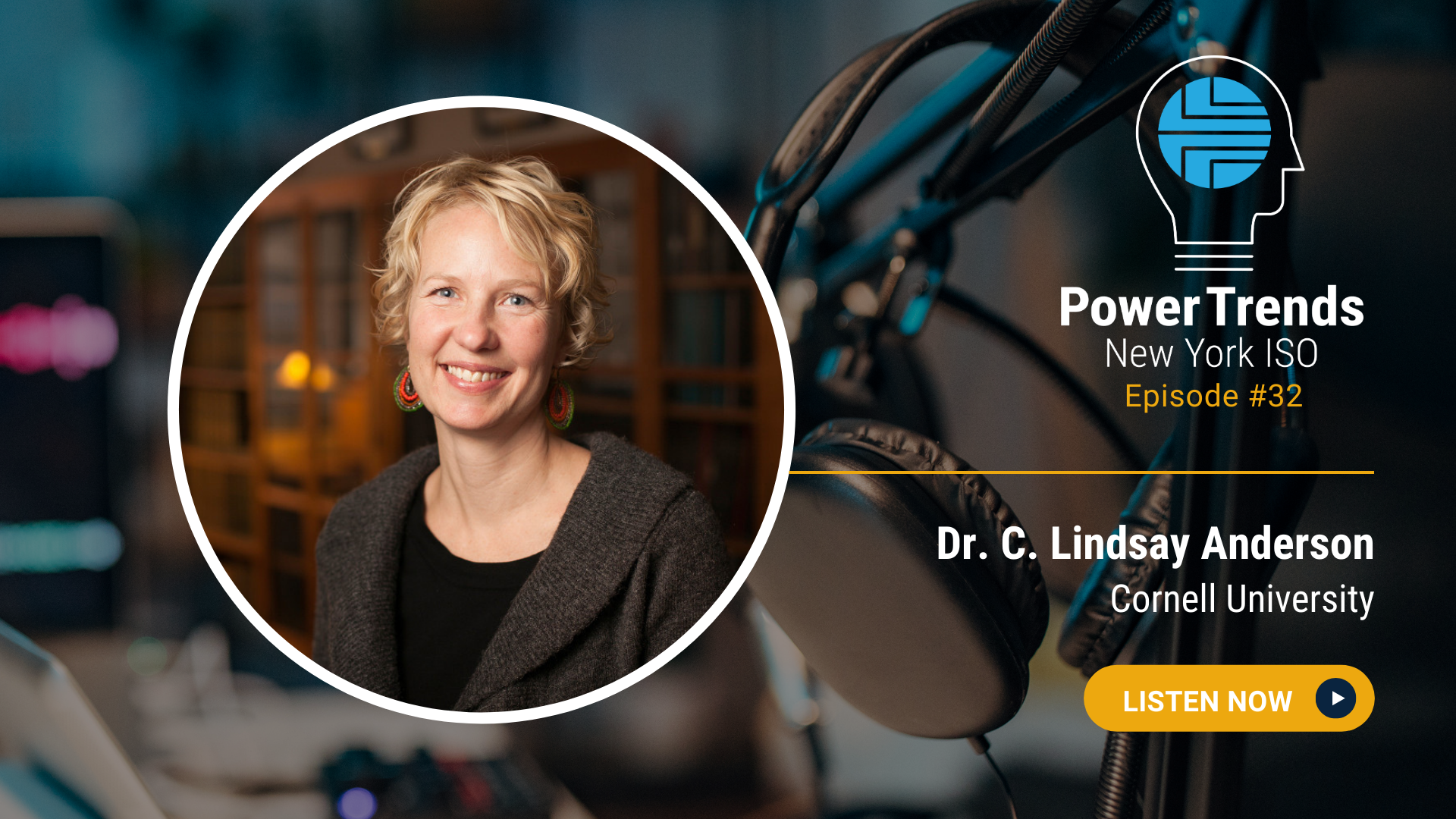Podcast Ep. 32: Modeling the Path to Decarbonization with Cornell's Dr. C. Lindsay Anderson

What does the path to a decarbonized grid by 2040 look like? Dr. C. Lindsay Anderson of Cornell University is working to answer the question of where best on the grid to incorporate large amounts of new generation on the future grid to achieve optimal performance.
Anderson is chair of Cornell’s Department of Biological & Environmental Engineering. Her research focuses on creating detailed models of energy systems to see how they’ll perform under different conditions. Her other research interests run the gamut including energy economics; the future of nuclear power including fusion; renewable power systems including solar, wind, geothermal and hydropower; energy conservation by users and demand-side management; and global climate change.
The research team at the eponymous Anderson Lab is looking for ways to modify the algorithms used to make decisions on operating systems. The lab’s modeling is comprised of numerous independent data sets including those provided by NREL (the National Renewable Energy Laboratory). Anderson notes that NYISO’s publicly available datasets play an essential role in validating historical power flows, peak load patterns, and market behaviors.
“The last thing we want to do is keep all the fossil generators online and running just in case we need them,” she said, “because that undermines our ability to decarbonize.”
A big part of the research deals with considering the practical implications of the CLCPA. She calls it an exciting opportunity to look at New York’s climate goals and determine how they’ll work.
“Are there issues that we should address now before we find ourselves with some challenging situations down the road?” she asked.
Talking to people at the NYISO who know the system well is another important part of the process according to Anderson. She cites our ongoing System Resource and Outlook reporting and analysis of multiple decarbonization scenarios as essential in understanding the numerous variables and impacts.
“We consult with people at the NYISO to say, ‘This is what we're seeing. Does this resonate with you?’” she explained.
Some of those challenges result from geospatial issues. Renewable energy generated upstate still needs to be transmitted to downstate where the demand is greatest.
“The offshore wind off Long Island is key to that because it's located down there and wouldn't have to come through those lines. So those being effectively built up is going to be critically important,” she said.
Moving forward, modeling the ideal end state of a decarbonized grid is as important as anticipating the steps along the way in order to understand the iterative impacts of integrating new technology, and how we keep the system reliable throughout the transition.
